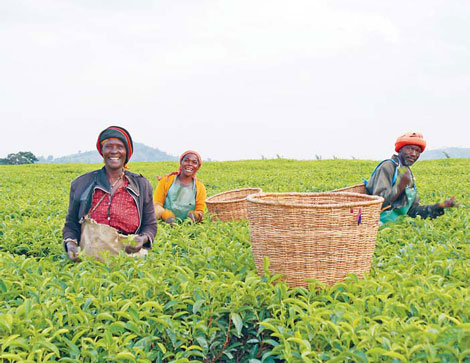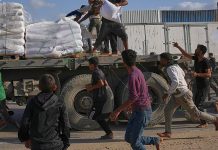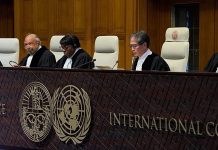By Faridah N Kulumba
Africa-Press-Kenya The Republic of Kenya is one of the world’s largest countries by area ranking in 48th position. It is situated in Eastern Africa with a population of 55 million persons as of February 19, 2022, based on Worldometer elaboration of the latest United Nations data Kenya is one of the developed countries in Eastern Africa and central Africa, surprisingly its population lives below the international poverty line due to several economic challenges such as income inequality, corruption climate change, and many more.
State of the economy
Kenya ranked 143 out of 189 countries on the Human Development Index (HDI) by the United Nations in 2019, describing the country as a lower-middle-income economy.
Agricultural challenges
Contribution
Agricultural sector is Kenya’s second-largest contributor to Kenya’s Gross Domestic Product (GDP) after the service sector. It contributes approximately 33 percent of the country’s GDP. This sector employs more than 40 percent of the total population and 70 percent of the rural population. Coffee and tea are Kenya’s traditional cash crops, but in recent years fresh flowers are fast-growing export. Kenya is the world’s 3rd largest exporter of cut flowers.
Climate Change
However Kenya is highly vulnerable to climate change. In recent years the agricultural sector has been affected due to climate change which led to more frequent extreme weather events like droughts that last longer than usual, flooding, and increasing temperature which has a greater significant impact on agricultural production than rainfall. As a result, causing a negative impact on revenue from crops.
Employment challenges
According to the African Journal of Economic Review, the Kenyan employment challenge is attributed to the rapid population growth which is 3 percent per annum, a youth bulge of 67 percent of the adult population, low and unsustained population economic growth, and structural rigidities. The review drew a clear picture of employment challenges in Kenya in terms of percentages, whereby 12.7 percent is the open unemployment rate, 21 percent underemployment, and a working poor estimated at 46 percent of the employed. This contributes to the sluggishness of economic growth.
Income inequality
Even though Kenya is growing steadily since 2005, poverty still affects millions of people’s lives due to the extreme challenge of income inequality which is out of control. The gap between the rich and the poor is so huge in Kenya that less than 0.1 percent of the population (8,300) own more than 99 percent (44 million Kenyans). The richest 10 percent of people in Kenya earned on average 23 times more than the poorest 10 percent. The minority of wealthy individuals and investors are creaming off the yield of the country’s economic performance. While this minority of extremely rich Kenyans are accumulating wealth and income, the fruits of economic growth are failing to trickle down to the poorest hence posing a big challenge to Kenya’s economy.
Corruption
Corruption background
Corruption in the Kenya government has a history that spans the era of the founding presidents way back in the 1960s. During Kenya’s first president Jomo Kenyatta’s administration, corruption became widespread throughout the government, in civil service, also in the business community. President Kenyatta and his family got involved in this corruption by enriching themselves through the mass purchase of property by using his presidential position. This act aroused great anger among Kenyans who were landless.
Recent years
Currently, during President Uhuru Kenyatta of the Jubilee party’s administration, corruption is still a challenge. In the 2020 Corruption Perceptions Index Kenya ranked 124 out of 180 countries for corruption. In October 2021, the family of Kenyan President Uhuru Kenyatta was linked to a freshly released declassification that exposed how the rich and mighty have stashed billions of shillings in offshore accounts.
Kenyatta and six members of his family were linked to 13 offshore companies, according to the Pandora Papers 12 million files which is the biggest leak in history.
Debt load
Last year Kenyans through the hashtag #StopLoaningKenya, signed an online petition asking the International Monetary Fund (IMF) to cancel its approval of a $2.34 billion loan for Kenya, citing mismanagement of funds by the government and the country’s increasing debt load. Over the years, analysts and the public, in general, have raised concerns about Kenya’s public debt, which has tripled since Uhuru became president in 2013.
Misuse of funds
Kenya’s microeconomic outlook has steadily posted robust growth over the past few decades mostly from the road, rail, and water transport infrastructure projects. However, much of this has come from cash flows diverted from ordinary Kenyan pockets at the microeconomic level through targeted monetary and fiscal measures coupled with poor management, corruption, massive theft of public funds, over legislation, and an ineffective judiciary resulting in diminished incomes in ordinary households and small businesses, unemployment, and general discontent across multiple sectors.
Coronavirus effects
The Covid-19 pandemic had severe impacts on the Kenyan economy and society as a whole. According to the national representative Business Pulse which was implemented by the World Bank in 2020. The report shows that about 93 percent of firms experienced a decline in sales compared to the same period of the previous year. Sales dropped by around 50 percent on average and median Kenyan firms, and by more than 70 percent for one-quarter of firms. Many firms experienced a decline in demand, cash flow, and available finance. The pandemic affected almost every firm due to lockdown.
The economic consequences of the pandemic are likely to have a far greater impact on the long-term health, wellbeing, and poverty levels of the population as a whole than predicted fatalities caused by the disease. Sectors worst hit by the virus include the labor force, housing, transport, health, trade, and tourism. The supply and demand for goods and services in these sectors have been significantly hampered. Furthermore, the restriction of movement in and out of the country dwindled the revenues from the tourism and aviation sector, while delays at borders due to testing of truck drivers have resulted in losses of profits to business owners.






